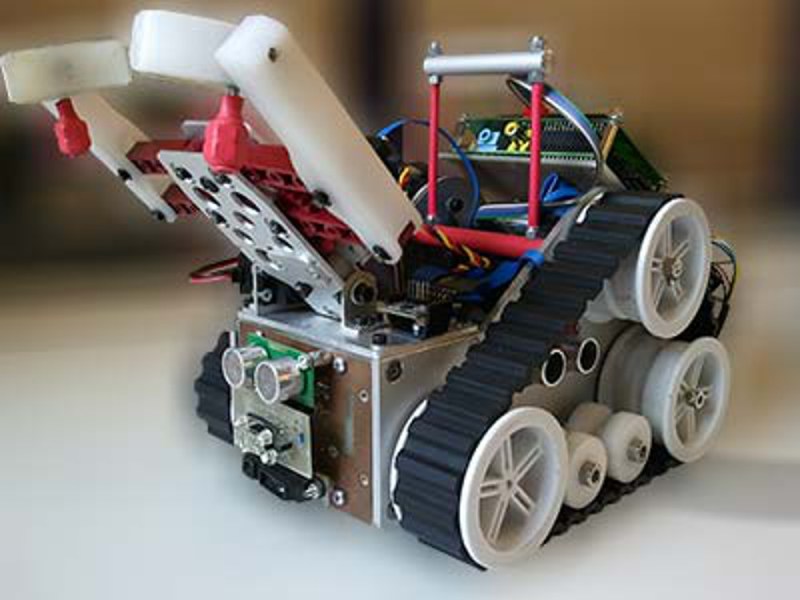At the Lifelong Learning Robotics Laboratory at the Erasmo Da Rotterdam in Italy, robots are (not surprisingly) used to teach all of the fundamentals of robotics. [Alessandro Rossetti] and the students at the lab have been at it for years now, and have finally finished their fifth generation of a robot called Nessie. The big idea is to help teach fundamentals of programming and electronics by building something that actually uses these principles.
The robot is largely 3D printed and uses an FPGA to interact with the physical world through a set of motors and sensors. The robot also uses a Raspberry Pi to hold the robot’s framework. The robot manages the sensors in hardware with readers attached to the CPU AXI bus. The CPU reads their values from memory space, though, so the robot is reported to be quite quick.
The lab is hoping to take their robot to a robotics competition in Bari, Italy. We hope that they perform well there, since we are big fans of any robot that’s designed to teach anyone about robotics and programming. After all, there are robots that help teach STEM in Africa, robots that teach teen girls about robots, and robots that teach everyone.
















First link appears to be broken
This is cool, but a Pi and FPGA? I hope the target audience is kids/students who have already spent some time with simpler things…
There are really good beginner platforms like the BOEBot if you are just getting into robotics.
Platforms and hardware are one thing, but it’s the book/text/guide/documentation that ultimately determines how effective or successful it will be for teaching STEM subjects.
Actually Nessie let everyone do something, there are students that experiment very simple stuff and more advanced students that do actual FPGA developement and OS Kernel level stuff.
It does help in education :) !
AXI bus is not externally visible on the RPi. Is there another ARM or or other CPU in the FPGA then? Is that the one that the students are working on and the RPi is just a gateway to the network?
It is easyer to play with FPGAs then to play with open foam….
Nice work! I’ve been working within educational robots for several years now. We’re launching our first product this year. Our robot is called Fable, we have a spinout company from the Technical University of Denmark. We aim at having a system that is easy to use with low setup time! It would be cool to hear your opinión on it!